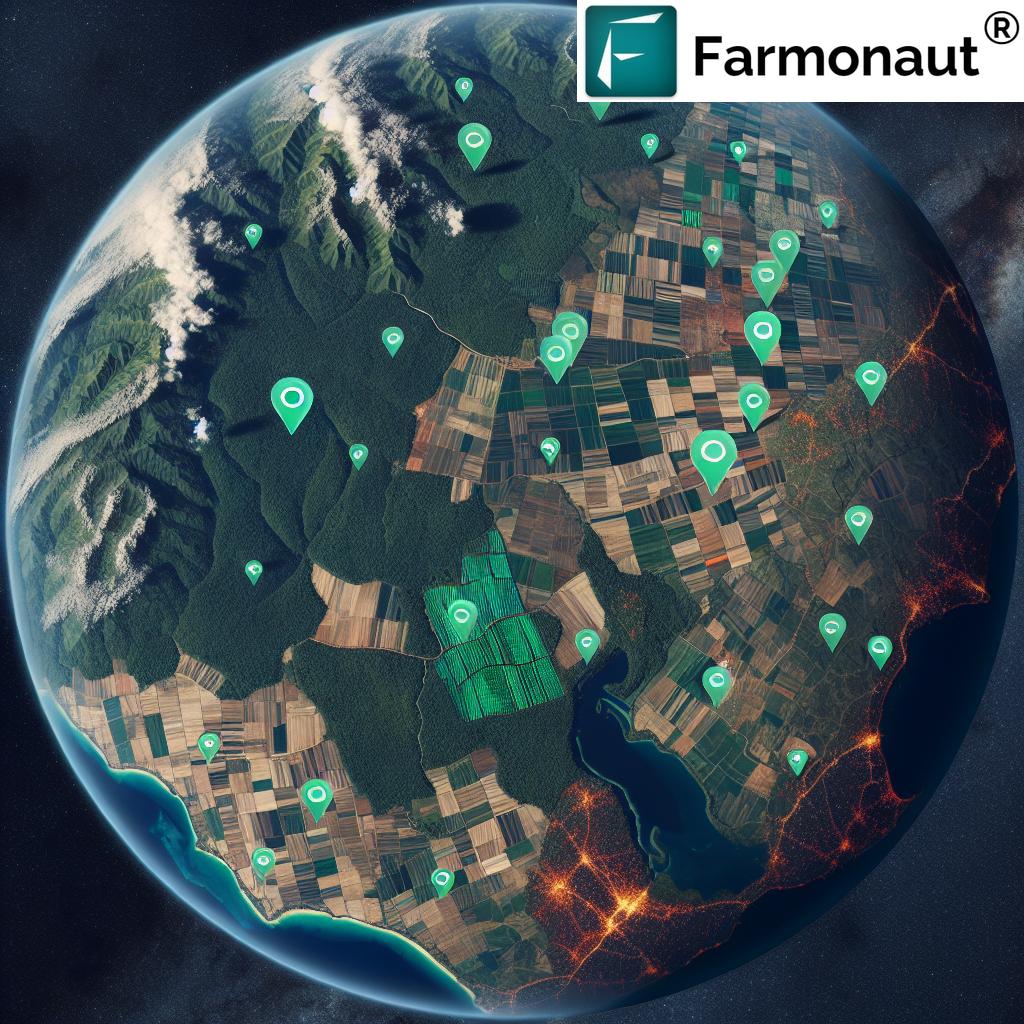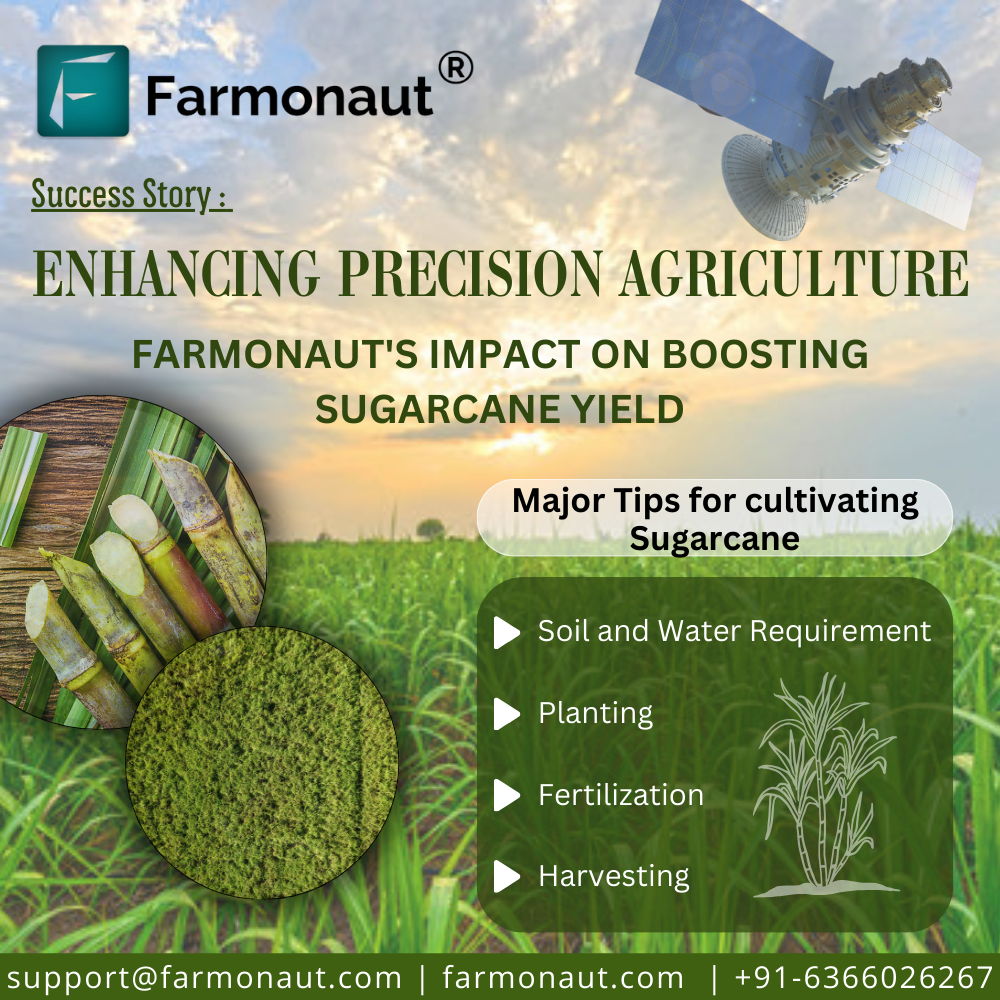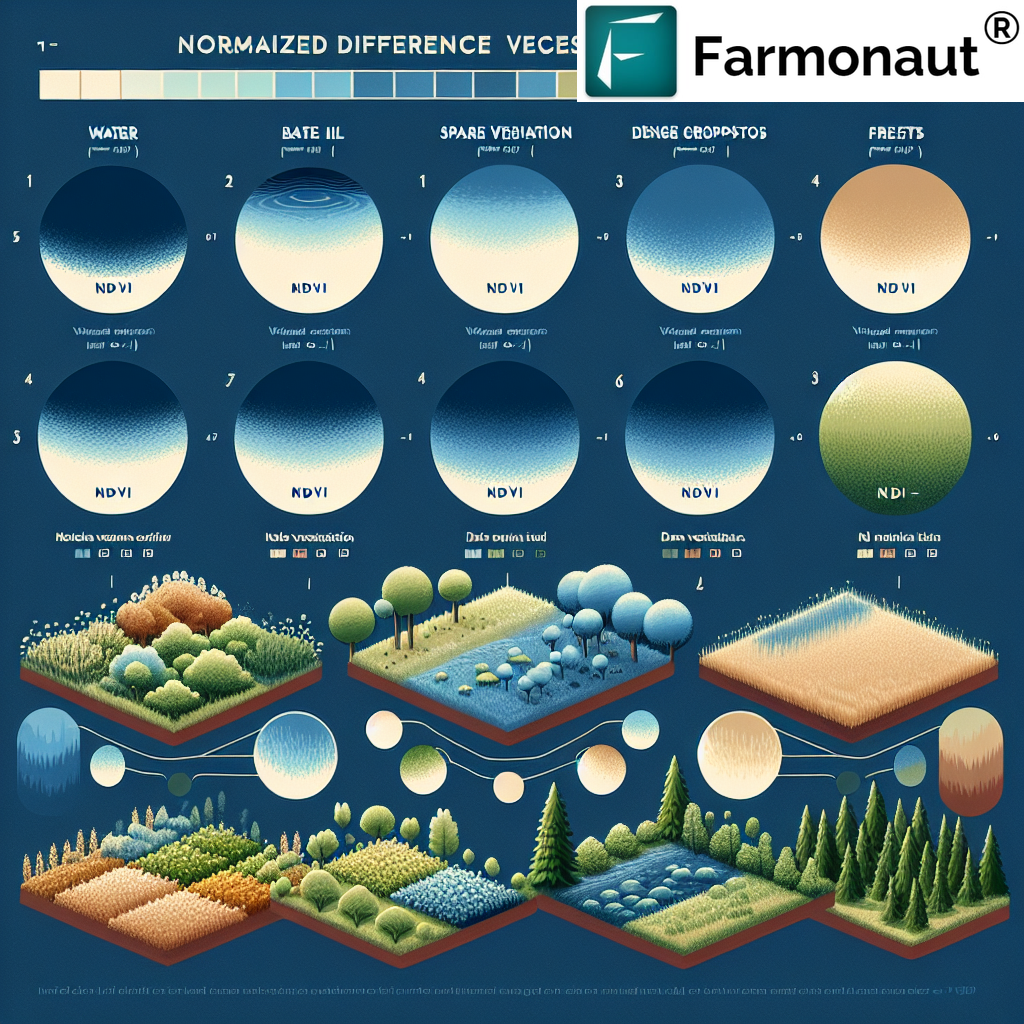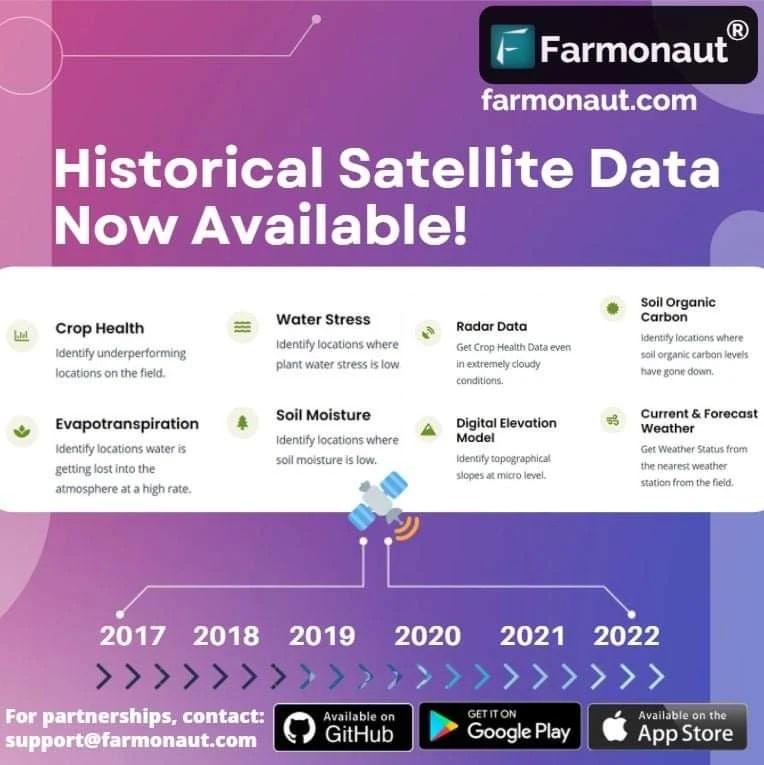InSAR Technology for Ground Displacement Monitoring 2025: A Complete Guide
“InSAR can detect ground displacement as small as 1 millimeter, transforming precision monitoring in agriculture and forestry.”
Introduction: Why Ground Displacement Monitoring Is Critical
Ground displacement, a subtle yet impactful phenomenon, affects soil, water systems, and ecosystems across the globe. In the context of agriculture and forestry, even minute shifts in the earth’s surface—sometimes no thicker than a few millimeters—can spell the difference between healthy crop yields and catastrophic land degradation. Monitoring such movements is no longer a luxury but a necessity for maintaining ecosystems, preventing soil degradation, and ensuring truly sustainable land use practices.
The emergence of InSAR Technology for Ground Displacement Monitoring: A Complete Guide in 2025 has transformed how we approach this challenge. This guide dives deep into the powerful intersection of innovative radar techniques, satellite-based observation, and agricultural stewardship. As we track the evolution of ground displacement monitoring into a high-tech discipline, we illuminate InSAR’s indispensable role in shaping the sustainable management of land and forests.
What Is InSAR Technology? Understanding the Basics
Interferometric Synthetic Aperture Radar (InSAR)—an advanced radar sensing technique—leverages satellite or airborne SAR platforms to monitor ground changes over vast regions. At its core, InSAR utilizes the principle that radar waves, emitted and received at different times, allow us to compare phase differences from images and detect tiny ground deformations. This ability, to measure spatial movements down to the millimeter, makes it a revolutionary sensing tool for large-scale geospatial monitoring.
The synthetic aperture in “SAR” refers to the enormous virtual antenna created by moving the radar sensors along a flight path. By comparing at least two images—often taken days or weeks apart—we can unlock a wealth of fine-scale information hidden to traditional survey methods.
- Ground displacement detection: Down to 1–2 mm accuracy
- Wide-area observation: Covers up to 10,000 sq km per observation
- High temporal resolution: Up to a dozen observations per month with the latest satellite constellations
How Does InSAR Technology Work? The Technical Process
The process of InSAR technology for ground displacement monitoring begins with the collection of synthetic aperture radar (SAR) images from satellites (e.g., ESA’s Sentinel-1 or advanced commercial platforms). Here’s how InSAR delivers precise and accurate data:
- Radar Transmission: The satellite transmits microwave pulses toward the earth’s surface.
- Backscattering: Waves reflect off objects, soil, and vegetation and return to the satellite’s sensors.
- Acquisition at Different Times: At least two radar images are taken over the same areas, separated by a time interval (from days to weeks).
- Formation of Interferogram: Comparing phase differences between the images generates an “interferogram”—a spatial map revealing patterns of ground displacement. Each color cycle on the map represents a specific movement (often a few millimeters).
- Data Processing: Advanced algorithms remove noise sources (such as atmospheric effects, vegetation changes, and moisture) for more accurate ground movement results.
In 2025, with enhanced temporal resolution and robust algorithmic processing, InSAR has achieved unprecedented accuracy and flexibility for regular, scalable ground displacement monitoring in agricultural and forestry applications.
InSAR Applications in Agriculture and Forestry: A Complete Guide
The need for actionable ground displacement monitoring in agriculture and forestry has never been greater. With climate variability, unsustainable land use practices, and population growth, safeguarding soil and crop health is a top priority. Here’s how InSAR technology for ground displacement monitoring delivers solutions:
1. Soil Subsidence Monitoring in Agricultural Regions
Subsidence—the sinking or settling of land due to extraction of groundwater, farming, or natural processes—can severely affect crop yields and water management. InSAR can detect subtle changes in ground level, identifying threatened areas long before they are visible to the naked eye. This enables:
- Early intervention to mitigate impacts on soil structure and drainage
- Adjustment of irrigation practices to reduce further subsidence
- Long-term water management planning for sustainable agriculture
Explore resource management and real-time monitoring via Farmonaut’s Large-scale Farm Management Platform, which provides actionable ground insights for better yields and soil health monitoring.
2. Landslide and Erosion Risk Assessment in Forested and Sloped Regions
In forestry and hilly agricultural areas, slow but progressive ground movements can precede disastrous landslides and soil erosion. Traditional field surveys often miss these subtle changes, especially in dense forests or inaccessible regions. InSAR enables:
- Assessing the stability of slopes for proactive safety measures and forest management
- Identifying risk areas for targeted interventions (tree planting, root reinforcement, water diversion)
- Supporting overall ecosystem health by managing geohazards
3. Crop Health Monitoring and Water Management
Ground deformation impacts soil moisture regimes, water infiltration patterns, and thus directly influences crop health. With InSAR:
- We can detect changes that alter soil moisture dynamics and guide water-efficient farming
- Insights from InSAR-driven platforms such as Traceability Solutions ensure supply chain authenticity for crops grown on monitored, sustainable land
- Integrating InSAR data with AI and carbon footprinting platforms guides responsible resource use and environmental compliance
4. Inventory and Forest Growth Dynamics
Forest managers can harness InSAR capabilities for:
- Observing forested areas for slow, progressive movements that could impact tree root stability
- Maintaining safety in high-risk, large, or inaccessible regions
- Planning reforestation or planting projects based on accurate ground data (Farmonaut’s crop, plantation, and forest advisory services)
“Over 70% of global agricultural land can be monitored remotely using advanced InSAR satellite technology by 2025.”
Comparative Analysis: InSAR vs. Traditional Ground Displacement Monitoring Methods
| Monitoring Method | Accuracy (Estimated %) |
Spatial Coverage (sq km) |
Temporal Frequency (times/month) |
Cost Efficiency (Est. $/hectare) |
Data Delivery Speed (days) |
Suitable for Agriculture/Forestry |
|---|---|---|---|---|---|---|
| GPS Field Survey | 70–80% | 1–20 | 1–2 | $5–$20 | 7–14 | No (labor-intensive) |
| Leveling (Geodetic Survey) | 85% | <50 | 1 | $10–$30 | 10–20 | No |
| Field Inspection & Manual Mapping | 50–75% | <10 | 1 | $15–$40 | 5–12 | No |
| InSAR (Interferometric Synthetic Aperture Radar) | ~90% | ~10,000 | 8–12 | < $1 | ~2 | Yes |
Advantages of InSAR Technology for Ground Displacement Monitoring in 2025
InSAR has revolutionized ground displacement monitoring through a range of unprecedented advantages:
- Vast spatial and temporal coverage: InSAR delivers data over large areas, including difficult terrain and geographically inaccessible regions.
- Millimeter-scale accuracy: It detects minute changes—as narrow as 1 millimeter—helping pinpoint subtle ground movements before visible symptoms emerge.
- Cost effectivity: With automated workflows and frequent revisits, InSAR provides actionable data at a fraction of the cost of repeated field surveys.
- Time efficiency: With rapid data delivery (as little as 2 days), farmers and forest managers can quickly intervene to reduce risk and mitigate potential damages.
- Consistency and automation: AI-driven platforms—like Farmonaut’s AI Advisory System—automatically analyze, interpret, and advise on mitigation measures based on satellite data, providing timely guidance for users.
Limitations and Challenges of InSAR in Ground Displacement Monitoring
Despite its transformation of remote monitoring in agriculture and forestry, InSAR technology is not without limitations. Some challenges include:
- Signal loss in dense vegetation and forests: In regions where tree canopies are thick, radar waves may not fully penetrate to the soil, leading to decreased data quality.
- Impact of seasonal changes: Moisture fluctuations, crop cycles, and vegetation cover variations can introduce noise to the data, which requires advanced processing and corrective models.
- Difficulty in differentiating movement sources: Discerning natural ground shifts from anthropogenic impacts—such as irrigation-induced subsidence—demands integration with additional sensors and complementary ground truth data.
- Atmospheric and geometric effects: Changes in atmospheric properties or satellite look angles may introduce artefacts into the measurement, affecting overall accuracy.
Nevertheless, the integration of Artificial Intelligence, robust data fusion (from meteorological and soil moisture sensors), and algorithmic refinement is quickly closing these gaps, making InSAR an ever more powerful tool for sustainable land management and environmental monitoring in 2025 and beyond.
The Future of InSAR Technology in Sustainable Land Management
By 2025, the future outlook for InSAR technology for ground displacement monitoring is brighter than ever. Key trends and developments shaping the path ahead include:
- Proliferation of advanced satellite platforms: The number and variety of SAR-capable satellites—government (e.g., ESA Sentinel series) and commercial—has increased, ensuring continuous, high-frequency coverage across all regions.
- Real-time and near real-time monitoring: Ongoing advances in data processing and cloud computing empower near-instantaneous data delivery, a crucial factor for disaster preparedness and response.
- Integration with AI: AI-driven insights are transforming raw interferometric data into actionable intelligence for agricultural and forestry stakeholders.
- Climate adaptation and sustainability: Use of InSAR data guides the adoption of sustainable practices to minimize soil degradation, reduce risk of landslides and subsidence, and strengthen ecosystem health.
Whether for individual farmers, large agri-businesses, or forest managers, InSAR—when embedded in digital platforms like Farmonaut—is rapidly becoming a linchpin for smart, risk-aware, and data-driven decision making.
Farmonaut and Satellite Monitoring Solutions for 2025
As a pioneering satellite technology company, Farmonaut empowers users with affordable, accessible, and highly scalable geospatial intelligence. Our suite of tools leverages satellite imagery, AI, blockchain, and precision analytics to deliver end-to-end insights for agriculture, forestry, mining, and beyond—enabling effective management and sustainability at every scale.
- Web and mobile platforms: Monitor your fields, plantations, or forested lands in real time—on any device. Our app suite delivers high-frequency updates and customizable reporting across agriculture and forestry workflows.
- API Access: For developers and businesses looking to integrate InSAR and satellite-driven data into existing systems, explore the Farmonaut API with complete Developer Documentation. Flexible, secure, and scalable—enabling everything from resource monitoring to product traceability in agriculture.
- Blockchain-Based Traceability: Ensure that every point in your agricultural or mining supply chain is verified and authentic using Farmonaut Traceability. Boosts transparency, trust, and regulatory compliance.
- Environmental Monitoring: Our Carbon Footprinting services quantify and control emissions, helping you maintain robust environmental protocols grounded in high-resolution satellite data.
- Smart Fleet Management: Optimize logistics and resource flows with Fleet Management Solutions, essential for large agricultural, forestry, and mining operations leveraging InSAR-enabled geographic intelligence.
- Crop Loans and Insurance: Lower risk and streamline processes for agricultural lending and insurance using Farmonaut’s satellite verification tools, built specifically for agricultural finance institutions.
FAQ: InSAR Technology for Ground Displacement Monitoring
What does InSAR stand for, and how is it different from regular SAR?
InSAR means Interferometric Synthetic Aperture Radar. While regular SAR (Synthetic Aperture Radar) captures high-resolution radar images, InSAR analyzes phase differences between two SAR images taken at different times to measure tiny changes in the ground—crucial for ground displacement monitoring.
Why is InSAR especially beneficial for agriculture and forestry in 2025?
With higher satellite revisit rates, improved data fusion, and AI-driven interpretation in 2025, InSAR makes it possible to remotely monitor large, inaccessible or forested areas, providing fast, affordable, and accurate measurements of ground movements, subsidence, and geohazards—all of which can help sustain soil health and boost productivity.
How often can InSAR satellite data be acquired?
With the current generation of satellites, InSAR can deliver new ground deformation data as often as 8–12 times per month for any given region.
Can InSAR effectively penetrate through dense forests?
While InSAR is highly effective over croplands and areas with little vegetation, its signal strength can be reduced in densely forested areas. Ongoing improvements in radar wavelengths and processing algorithms are helping to reduce these limitations for better forest monitoring.
Is InSAR data expensive to use for a typical farm or forest?
Not anymore. Automated, cloud-driven platforms—including those offered by Farmonaut—have made InSAR data and analytics affordable and accessible for individual farmers, agribusinesses, and foresters worldwide, providing cost-effective solutions that scale from small to very large areas.
What kind of ground deformation can InSAR detect?
Subsidence caused by groundwater depletion, uplift due to geological activity, landslides, slow slope movement, and anthropogenic changes (e.g., irrigation impacts) are all detectable with InSAR at the millimeter scale.
How is InSAR data integrated into agricultural and forestry management decisions?
Actionable insights—such as early warnings for subsidence, erosion, or landslide risks—can be combined with traditional knowledge, AI advisories, ground sensors, and weather data to enable targeted interventions, optimize resource management, and ensure long-term sustainability.
Conclusion: The Path Forward with InSAR Technology for Ground Displacement Monitoring
By 2025 and beyond, InSAR technology for ground displacement monitoring stands at the forefront of the technological revolution in agriculture and forestry. Its unique combination of accuracy, wide-area coverage, and cost-effectiveness delivers actionable data for maintaining healthy soils, preventing erosion, and ensuring that every decision supports sustainable land management practices.
As precision agriculture and smart forestry become increasingly vital, embracing innovative InSAR solutions—including those accessible via Farmonaut’s Web, Android, iOS apps, and API—will be key to future resilience, food security, and ecological safety.
Smart land managers and knowledge-driven organizations have already recognized that ground displacement monitoring using InSAR is no longer a “nice-to-have”—it’s an indispensable tool for stewarding agricultural and forest resources into the future.













